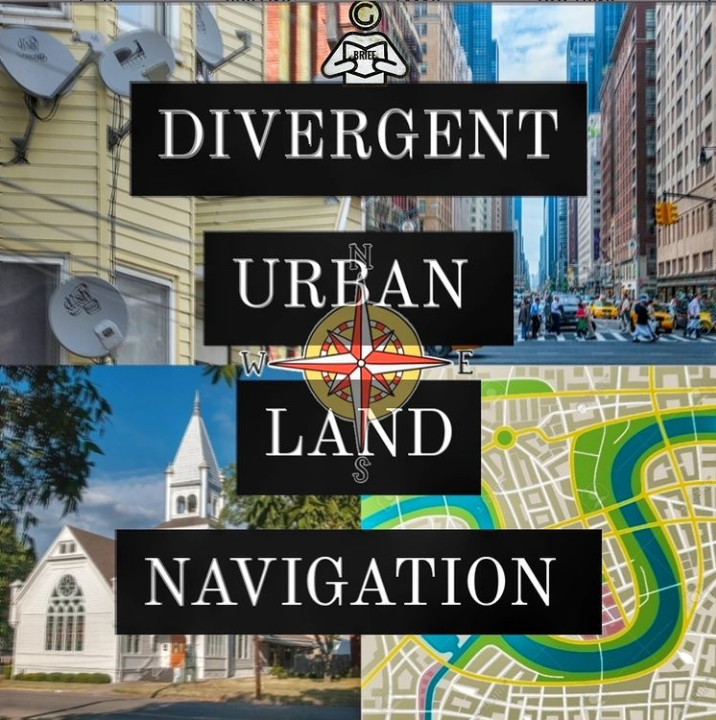Divergent (outside-the-box) thinking can provide helpful insight when you’re lost and traditional navigation assets are unavailable. While each city and state varies, these basic rules of thumb can help you gain orientation.

》The Grid System
Highways that end in an odd number usually go North/South as do Avenues (uptown/downtown). Even numbered highways run East/West as do Streets (crosstown). With the exception of large cross-streets that run in both directions, even-numbered streets run one-way towards the east and odd-numbered streets run one-way towards the west. House and building numbers stay the same (i.e. all even on the left and all odd on the right) as you travel down the same road, so if you see an odd address on the right side of the roads rest assured all the houses on the right will be odd numbered. Naming systems follow similar patterns (i.e. roads named after states typically run the same direction such as East/West).
》Satellite Dishes
Look for satellite dishes on buildings or towers. Satellite dishes work by pointing the dish towards a geostationary satellite that stays over the same point. Because of this, most dishes in the city will be pointing in the same direction. Learn which direction that is now so you’ll be aware of it later.
》Churches
In large, older cities, most churches were built to face East and can be used to get a rough estimate of the cardinal points of direction.
》Pedestrians
If you are trying to get from one point to another, study the flow of pedestrian traffic. By following a crowd in the late afternoon, it will take you towards a station or other transportation hub. In the morning, walk against the flow of the crowd to locate these stations.
》Flow of Rivers in City
Know the direction a river flows through your city. Does it flow North, South, East, or West? Is the flow from higher ground to lower ground? Do these rivers flow to the sea or to other rivers? Does the current take you through the city or out of the city?
After you find the answers, it makes it easier to decide if leaving the city by water is a feasible plan.
BUGOUT AND SCAVENGING BY WATER
Consider using the natural highway system (water) to travel after a Life Altering Event such as a prolonged fuel shortage.
There are over 26,000 rivers, streams and inland waterways in the U.S. and 85%+ of the U.S. can be reached by water and a 30 minute walk from your take-out point.
If a creek is all you have, in less than a day or two you could still reach a larger river, like the Ohio. From there you can go almost anywhere, with portages when necessary.
》Map out public boat ramps and contingency access points.
》Be prepared to carry your watercraft as there are countless locks & dams that will need to be traversed on foot.
》Traveling upstream may not be possible without a trolling/outboard motor. Consider the idea of one-way travel.
》Setup idea – sit-on top kayak, trolling motor, solar panel, deep cycle battery, and a 2 bladed paddle.
This article was originally written by the Grayman Briefing. Stay in the know, sign up for Intel and Situational Awareness alerts pushed to your phone on emerging threats and preparedness warnings. Click HERE to subscribe to the Grayman Briefing.
